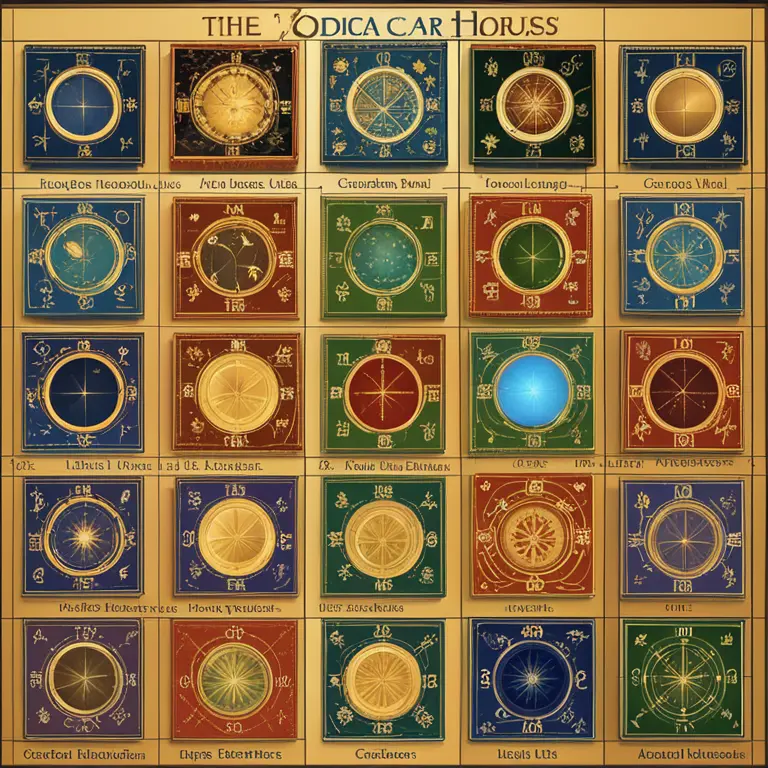
A Guide to Astrology's Houses and Planets
An insightful overview of the fundamental elements of astrology: the twelve houses and their planetary rulers, guiding you through a celestial map of human experiences.
article by Priya Deshmukh
The Basis of Astrological Insight
Astrology is a complex and nuanced field that goes far beyond the sun signs familiar to most. At its heart are the twelve houses of the zodiac, each corresponding to different facets of our lives. The planets, each with their own energies and influences, journey through these houses and shape the way we experience the world around us. This intricate dance provides a celestial narrative, offering insights into our personal growth, challenges, and potentials. Understanding the astrological houses and planets is key to unlocking the deeper messages found in the stars.

The Zodiac Houses: A Cosmic Framework
The astrological chart is split into twelve houses, each one acting as a stage for different life themes. The First House, for instance, represents self-image and new beginnings, while the Sixth House centers on health and service. As a snapshot in time, the chart depicts the unique positioning of each house, influenced by the sign on its cusp and hosting planets within its boundaries. These placements serve as indicators of where in life one's attention will likely be focused, and which areas may flourish or require work in the upcoming years, particularly after 2024, as planetary shifts occur.

Planets: Celestial Bodies of Influence
Planets are the dynamic players within the houses, each contributing their own energy and agenda. The Sun and Moon, representing core identity and emotional undercurrents respectively, are central to understanding one's personal narrative. Mercury's placement speaks to communication, Venus to love and beauty, and Mars to drive and ambition. The outer planets, such as Jupiter and Saturn, guide our expansion and maturation, influencing broader life lessons and societal structures that will be particularly pertinent as we approach the mid-2020s and consider long-term growth.

Interpreting Planetary Aspects
An integral part of astrology is deciphering how planets interact with one another. Aspects, or the angles planets form, describe these relationships and their manifestations. Conjunctions indicate merged energies, while oppositions and squares reveal tensions and challenges. Trines and sextiles, however, suggest harmony and ease. Understanding these aspects is essential, as they can significantly affect forecasts and horoscopes beyond 2024, revealing potential opportunities or obstacles in one's personal development.

Shifting Energies: Transits and Progressions
As we look to the skies for guidance on future trends, particularly after 2024, transits and progressions become crucial. Transits involve current planetary movements interacting with natal chart placements, signaling timely activities or events. Progressions, a technique for symbolizing personal evolution, reflect inner changes and developments. Both methods provide a layered understanding of how celestial cycles correspond with individual journeys, offering foresight for navigating the years ahead.
Personalizing the Celestial Map
Ultimately, the blend of houses, planets, and aspects creates a personalized celestial map for each individual. Astrologers consider this map when crafting horoscopes, paying close attention to upcoming planetary shifts, like Jupiter's ingress into a new sign or Saturn's return. With transiting Pluto entering Aquarius in 2024, collective themes of transformation and innovation will emerge, touching lives on a personal to societal level. It's these movements and transitions that make astrology a continually relevant tool for personal discovery and understanding.
Published: 2/13/2024
Modified: 2/13/2024
More predictions
Come back here soon to learn more about yourself and your future


The Status of Astrology as a Scientific Discipline
Examining the intellectual rigor and systemic methodologies that argue for astrology's classification as a science in the modern world.


Astrology and Zodiac Signs: Clarifying the Connection
Delving into the intriguing relationship between astrology and zodiac signs, and how they influence each other in the cosmic tapestry.


Astrological Planetary Positions Today
Discover the current role of astrological bodies in influencing our daily lives with today's planetary alignments.